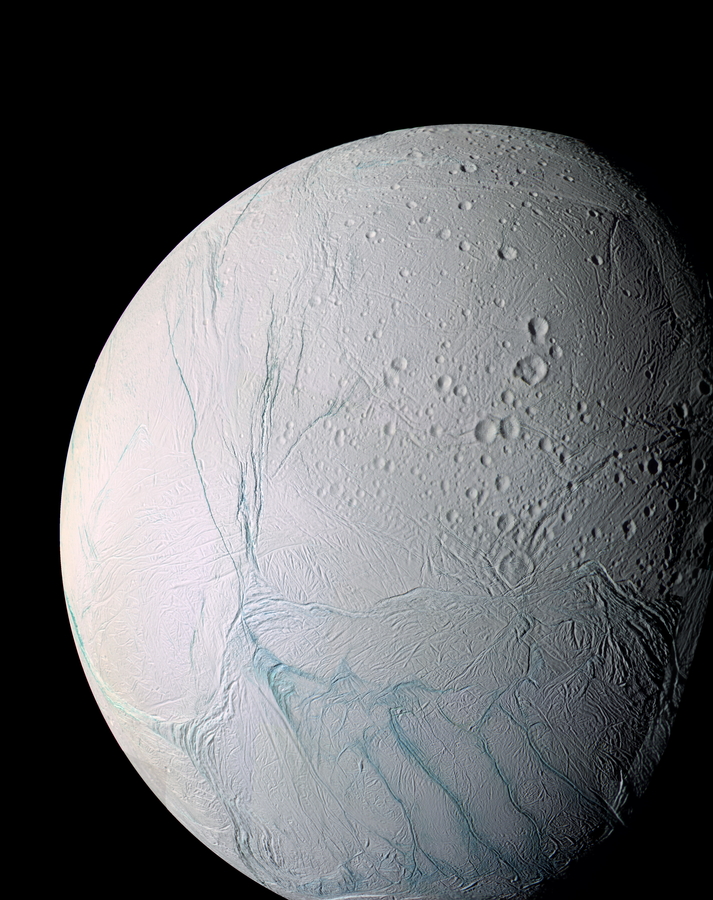On icy satellites, size controls the ice geometry
Enceladus and Europa, two icy satellites in our solar system, share similar surface temperatures and mean ice thickness. Despite that, their ice shell geometries are likely to be very different. Gravity and shape measurements taken on Enceladus favor a strongly poleward thinning ice shell, whereas Europa’s ice shell seems to be much flatter, supported by its limb profile.
This work proposes a mechanism to explain such a difference, which may be generalized to make predictions for other icy satellites. The key behind is the ocean dynamics. Driven by the temperature and salinity gradients underneath a thickness-varying ice shell, overturning circulations and baroclinic eddies will form, redistributing heat and tracers over the globe. The ocean heat transport (OHT) will, in turn, flatten the ice shell through the ice-pump mechanism. The efficiency of the OHT, however, varies with the satellite’s size and rotation period. In this work, we derive scaling laws that govern the OHT amplitude, verify the scalings using numerical simulations, and use them to predict the equilibrium ice thickness variations for icy moons with various sizes and rotation periods. Because of Europa’s strong gravity and slow rotation, its ice thickness variation is predicted to be less than 2km, in contrast to a 12+km ice thickness variation predicted for Enceladus. Given the OHT scaling laws, we demonstrate the possible ice evolution pathways for Enceladus and Europa using an ice evolution model with parameterized OHT.
5241 Broad Branch Road, NW
Greenewalt Lecture Hall
Washington, DC 20015
United States

2005_DTM_NASAEnceladusTigerStripes